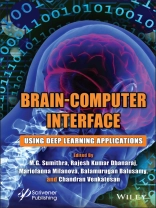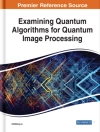BRAIN-COMPUTER INTERFACE
It covers all the research prospects and recent advancements in the brain-computer interface using deep learning.
The brain-computer interface (BCI) is an emerging technology that is developing to be more functional in practice. The aim is to establish, through experiences with electronic devices, a communication channel bridging the human neural networks within the brain to the external world. For example, creating communication or control applications for locked-in patients who have no control over their bodies will be one such use. Recently, from communication to marketing, recovery, care, mental state monitoring, and entertainment, the possible application areas have been expanding. Machine learning algorithms have advanced BCI technology in the last few decades, and in the sense of classification accuracy, performance standards have been greatly improved. For BCI to be effective in the real world, however, some problems remain to be solved.
Research focusing on deep learning is anticipated to bring solutions in this regard. Deep learning has been applied in various fields such as computer vision and natural language processing, along with BCI growth, outperforming conventional approaches to machine learning. As a result, a significant number of researchers have shown interest in deep learning in engineering, technology, and other industries; convolutional neural network (CNN), recurrent neural network (RNN), and generative adversarial network (GAN).
Audience
Researchers and industrialists working in brain-computer interface, deep learning, machine learning, medical image processing, data scientists and analysts, machine learning engineers, electrical engineering, and information technologists.
Mục lục
Preface xiii
1 Introduction to Brain–Computer Interface: Applications and Challenges 1
Jyoti R. Munavalli, Priya R. Sankpal, Sumathi A. and Jayashree M. Oli
1.1 Introduction 1
1.2 The Brain – Its Functions 3
1.3 BCI Technology 3
1.3.1 Signal Acquisition 5
1.3.1.1 Invasive Methods 6
1.3.1.2 Non-Invasive Methods 8
1.3.2 Feature Extraction 10
1.3.3 Classification 11
1.3.3.1 Types of Classifiers 12
1.4 Applications of BCI 13
1.5 Challenges Faced During Implementation of BCI 17
References 21
2 Introduction: Brain–Computer Interface and Deep Learning 25
Muskan Jindal, Eshan Bajal and Areeba Kazim
2.1 Introduction 26
2.1.1 Current Stance of P300 BCI 28
2.2 Brain–Computer Interface Cycle 29
2.3 Classification of Techniques Used for Brain–Computer Interface 38
2.3.1 Application in Mental Health 38
2.3.2 Application in Motor-Imagery 38
2.3.3 Application in Sleep Analysis 39
2.3.4 Application in Emotion Analysis 39
2.3.5 Hybrid Methodologies 40
2.3.6 Recent Notable Advancements 41
2.4 Case Study: A Hybrid EEG-f NIRS BCI 46
2.5 Conclusion, Open Issues and Future Endeavors 47
References 49
3 Statistical Learning for Brain–Computer Interface 63
Lalit Kumar Gangwar, Ankit, John A. and Rajesh E.
3.1 Introduction 64
3.1.1 Various Techniques to BCI 64
3.1.1.1 Non-Invasive 64
3.1.1.2 Semi-Invasive 65
3.1.1.3 Invasive 67
3.2 Machine Learning Techniques to BCI 67
3.2.1 Support Vector Machine (SVM) 69
3.2.2 Neural Networks 69
3.3 Deep Learning Techniques Used in BCI 70
3.3.1 Convolutional Neural Network Model (CNN) 72
3.3.2 Generative DL Models 73
3.4 Future Direction 73
3.5 Conclusion 74
References 75
4 The Impact of Brain–Computer Interface on Lifestyle of Elderly People 77
Zahra Alidousti Shahraki and Mohsen Aghabozorgi Nafchi
4.1 Introduction 78
4.2 Diagnosing Diseases 79
4.3 Movement Control 84
4.4 Io T 85
4.5 Cognitive Science 86
4.6 Olfactory System 88
4.7 Brain-to-Brain (B2B) Communication Systems 89
4.8 Hearing 90
4.9 Diabetes 91
4.10 Urinary Incontinence 92
4.11 Conclusion 93
References 93
5 A Review of Innovation to Human Augmentation in Brain-Machine Interface – Potential, Limitation, and Incorporation of AI 101
T. Graceshalini, S. Rathnamala and M. Prabhanantha Kumar
5.1 Introduction 102
5.2 Technologies in Neuroscience for Recording and Influencing Brain Activity 103
5.2.1 Brain Activity Recording Technologies 104
5.2.1.1 A Non-Invasive Recording Methodology 104
5.2.1.2 An Invasive Recording Methodology 104
5.3 Neuroscience Technology Applications for Human Augmentation 106
5.3.1 Need for BMI 106
5.3.1.1 Need of BMI Individuals for Re-Establishing the Control and Communication of Motor 107
5.3.1.2 Brain-Computer Interface Noninvasive Research at Wadsworth Center 107
5.3.1.3 An Interface of Berlin Brain-Computer: Machine Learning-Dependent of User-Specific Brain States Detection 107
5.4 History of BMI 108
5.5 BMI Interpretation of Machine Learning Integration 111
5.6 Beyond Current Existing Methodologies: Nanomachine Learning BMI Supported 116
5.7 Challenges and Open Issues 119
5.8 Conclusion 120
References 121
6 Resting-State f MRI: Large Data Analysis in Neuroimaging 127
M. Menagadevi , S. Mangai, S. Sudha and D. Thiyagarajan
6.1 Introduction 128
6.1.1 Principles of Functional Magnetic Resonance Imaging (f MRI) 128
6.1.2 Resting State f MRI (rsf MRI) for Neuroimaging 128
6.1.3 The Measurement of Fully Connected and Construction of Default Mode Network (DMN) 129
6.2 Brain Connectivity 129
6.2.1 Anatomical Connectivity 129
6.2.2 Functional Connectivity 130
6.3 Better Image Availability 130
6.3.1 Large Data Analysis in Neuroimaging 131
6.3.2 Big Data rf MRI Challenges 133
6.3.3 Large rf MRI Data Software Packages 134
6.4 Informatics Infrastructure and Analytical Analysis 137
6.5 Need of Resting-State MRI 137
6.5.1 Cerebral Energetics 137
6.5.2 Signal to Noise Ratio (SNR) 137
6.5.3 Multi-Purpose Data Sets 138
6.5.4 Expanded Patient Populations 138
6.5.5 Reliability 138
6.6 Technical Development 138
6.7 rsf MRI Clinical Applications 139
6.7.1 Mild Cognitive Impairment (MCI) and Alzheimer’s Disease (AD) 139
6.7.2 Fronto-Temporal Dementia (FTD) 140
6.7.3 Multiple Sclerosis (MS) 141
6.7.4 Amyotrophic Lateral Sclerosis (ALS) and Depression 143
6.7.5 Bipolar 144
6.7.6 Schizophrenia 145
6.7.7 Attention Deficit Hyperactivity Disorder (ADHD) 147
6.7.8 Multiple System Atrophy (MSA) 147
6.7.9 Epilepsy/Seizures 147
6.7.10 Pediatric Applications 149
6.8 Resting-State Functional Imaging of Neonatal Brain Image 149
6.9 Different Groups in Brain Disease 151
6.10 Learning Algorithms for Analyzing rsf MRI 151
6.11 Conclusion and Future Directions 154
References 154
7 Early Prediction of Epileptic Seizure Using Deep Learning Algorithm 157
T. Jagadesh, A. Reethika, B. Jaishankar and M.S. Kanivarshini
7.1 Introduction 158
7.2 Methodology 164
7.3 Experimental Results 169
7.4 Taking Care of Children with Seizure Disorders 172
7.5 Ketogenic Diet 172
7.6 Vagus Nerve Stimulation (VNS) 172
7.7 Brain Surgeries 173
7.8 Conclusion 173
References 175
8 Brain–Computer Interface-Based Real-Time Movement of Upper Limb Prostheses Topic: Improving the Quality of the Elderly with Brain-Computer Interface 179
S. Vairaprakash and S. Rajagopal
8.1 Introduction 180
8.1.1 Motor Imagery Signal Decoding 181
8.2 Literature Survey 182
8.3 Methodology of Proposed Work 184
8.3.1 Proposed Control Scheme 185
8.3.2 One Versus All Adaptive Neural Type- 2 Fuzzy Inference System (OVAANT2FIS) 187
8.3.3 Position Control of Robot Arm Using Hybrid BCI for Rehabilitation Purpose 187
8.3.4 Jaco Robot Arm 189
8.3.5 Scheme 1: Random Order Positional Control 189
8.4 Experiments and Data Processing 192
8.4.1 Feature Extraction 195
8.4.2 Performance Analysis of the Detectors 197
8.4.3 Performance of the Real Time Robot Arm Controllers 198
8.5 Discussion 200
8.6 Conclusion and Future Research Directions 202
References 203
9 Brain–Computer Interface-Assisted Automated Wheelchair Control Management-Cerebro: A BCI Application 205
Sudhendra Kambhamettu, Meenalosini Vimal Cruz, Anitha S., Sibi Chakkaravarthy S. and K. Nandeesh Kumar
9.1 Introduction 206
9.1.1 What is a BCI? 207
9.2 How Do BCI’s Work? 207
9.2.1 Measuring Brain Activity 208
9.2.1.1 Without Surgery 208
9.2.1.2 With Surgery 208
9.2.2 Mental Strategies 209
9.2.2.1 Ssvep 210
9.2.2.2 Neural Motor Imagery 210
9.3 Data Collection 211
9.3.1 Overview of the Data 211
9.3.2 EEG Headset 213
9.3.3 EEG Signal Collection 214
9.4 Data Pre-Processing 215
9.4.1 Artifact Removal 216
9.4.2 Signal Processing and Dimensionality Reduction 217
9.4.3 Feature Extraction 217
9.5 Classification 218
9.5.1 Deep Learning (DL) Model Pipeline 219
9.5.2 Architecture of the DL Model 220
9.5.3 Output Metrics of the Classifier 221
9.5.4 Deployment of DL Model 221
9.5.5 Control System 223
9.5.6 Control Flow Overview 223
9.6 Control Modes 223
9.6.1 Speech Mode 223
9.6.2 Blink Stimulus Mapping 223
9.6.3 Text Interface 225
9.6.4 Motion Mode 225
9.6.5 Motor Arrangement 225
9.6.6 Imagined Motion Mapping 226
9.7 Compilation of All Systems 226
9.8 Conclusion 226
References 227
10 Identification of Imagined Bengali Vowels from EEG Signals Using Activity Map and Convolutional Neural Network 231
Rajdeep Ghosh, Nidul Sinha and Souvik Phadikar
10.1 Introduction 232
10.1.1 Electroencephalography (EEG) 233
10.1.2 Imagined Speech or Silent Speech 233
10.2 Literature Survey 234
10.3 Theoretical Background 238
10.3.1 Convolutional Neural Network 238
10.3.2 Activity Map 240
10.4 Methodology 242
10.4.1 Data Collection 243
10.4.2 Pre-Processing 244
10.4.3 Feature Extraction 245
10.4.4 Classification 247
10.5 Results 249
10.6 Conclusion 252
Acknowledgment 252
References 252
11 Optimized Feature Selection Techniques for Classifying Electrocorticography Signals 255
B. Paulchamy, R. Uma Maheshwari, D. Sudarvizhi AP(Sr. G), R. Anandkumar AP(Sr. G) and Ravi G.
11.1 Introduction 256
11.1.1 Brain–Computer Interface 256
11.2 Literature Study 258
11.3 Proposed Methodology 260
11.3.1 Dataset 261
11.3.2 Feature Extraction Using Auto-Regressive (AR) Model and Wavelet Transform 261
11.3.2.1 Auto-Regressive Features 261
11.3.2.2 Wavelet Features 262
11.3.2.3 Feature Selection Methods 262
11.3.2.4 Information Gain (IG) 263
11.3.2.5 Clonal Selection 263
11.3.2.6 An Overview of the Steps of the Clonalg 264
11.3.3 Hybrid CLONALG 265
11.4 Experimental Results 268
11.4.1 Results of Feature Selection Using IG with Various Classifiers 272
11.4.2 Results of Optimizing Support Vector Machine Using CLONALG Selection 274
11.5 Conclusion 276
References 277
12 BCI – Challenges, Applications, and Advancements 279
R. Remya and Sumithra, M.G.
12.1 Introduction 279
12.1.1 BCI Structure 280
12.2 Related Works 281
12.3 Applications 282
12.4 Challenges and Advancements 297
12.5 Conclusion 299
References 299
Index 303
Giới thiệu về tác giả
M. G. Sumithra, Ph D, is a professor at Anna University Chennai, India. With 25 years of teaching experience, she has published more than 70 technical papers in refereed journals, 3 book chapters, and 130 research papers in national and international conferences. She is a Nvidia Deep Learning Institute Certified Instructor for ‘Computer Vision’.
Rajesh Kumar Dhanaraj, Ph D, is a professor in the School of Computing Science and Engineering at Galgotias University, Greater Noida, India. He has contributed around 25 authored and edited books on various technologies, 17 patents, and more than 40 articles and papers in various refereed journals and international conferences. He is a Senior Member of the Institute of Electrical and Electronics Engineers (IEEE).
Mariofanna Milanova, Ph D, is a professor in the Department of Computer Science at the University of Arkansas, Little Rock, USA. She is an IEEE Senior Member and Nvidia’s Deep Learning Institute University Ambassador. She has published more than 120 publications, more than 53 journal papers, 35 book chapters, and numerous conference papers. She also has two patents.
Balamurugan Balusamy, Ph D, is a professor in the School of Computing Science and Engineering, Galgotias University, Greater Noida, India. He is a Pioneer Researcher in the areas of big data and Io T and has published more than 70 articles in various top international journals.
V. Chandran holds an M.E degree in VLSI Design from Government College of Technology, Coimbatore, and is a Nvidia Certified Instructor for Deep learning for Computer Vision.












